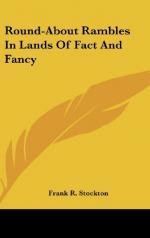But as we approach the present age we still find wonderful narrations about archers. Robin Hood, for instance, was a great fellow with the bow. It is said that on one occasion he shot an arrow so that it fell a mile from where he was standing! A long shot, and hard to be equalled by the crack rifles of the present day.
Sir Walter Scott, in “Ivanhoe,” introduces Robin Hood under the name of Locksley, and in a shooting match, when his opponent had planted his arrow right in the centre of the bull’s-eye, and everybody, of course, thought that nothing better than that could be done, Master Robin just steps up and lets fly his arrow, driving it into the arrow that was sticking in the target, splitting it from end to end!
And then there is that famous story about William Tell. Many persons have their doubts about this performance, and either assert that there never was such a person as Tell, or that no man could have confidence enough in his own skill to shoot at an apple on his son’s head. But I prefer to believe this good old story, and, in fact, I see no good reason to doubt it. There was a Dane, named Foke, of whom the same story is told, and an Englishman, named William of Cloudesley, is said to have shot an apple from his son’s head merely to show his expertness.
Most of the stories of bows and arrows relate to the accurate aim of the archers, but here is one which shows the tremendous force by which an arrow may be propelled, if the bow is strong and long enough. A French gentleman named Blaise de Vigenere, says that he saw a Turk, named Barbarossa, an admiral of a ship called the Grand Solyman, send an arrow from his bow, right through a cannon-ball! He did not state whether the cannon-ball had a hole through it, or not.
But I think that the most wonderful, astounding, and altogether amazing story about arrow-shooting is told of the Indians who used to inhabit Florida. It is stated that these Indians were in the habit of assembling, in parties of ten or a dozen, for the purpose of having some amusement in archery. They would form themselves into a circle, and one of them throwing an ear of maize or Indian corn into the air, the rest would shoot at it and would shell it of every grain of corn before it fell to the ground. Sometimes, the arrows would strike it so hard and fast that it would remain suspended in the air for several minutes, and the cob never fell until the very last grain had been shot from it!
After such a specimen of the drawing of the long bow as this, it would not be well to introduce any feebler illustrations, and so I will keep the rest of my anecdotal arrows in my quiver.
AN ANCIENT THEATRE.
[Illustration]
I suppose you are all familiar with pictures of the Colosseum at Rome, but unless you have carefully studied detailed descriptions of this edifice it is impossible for you to properly comprehend the grand style in which the ancients amused themselves.




